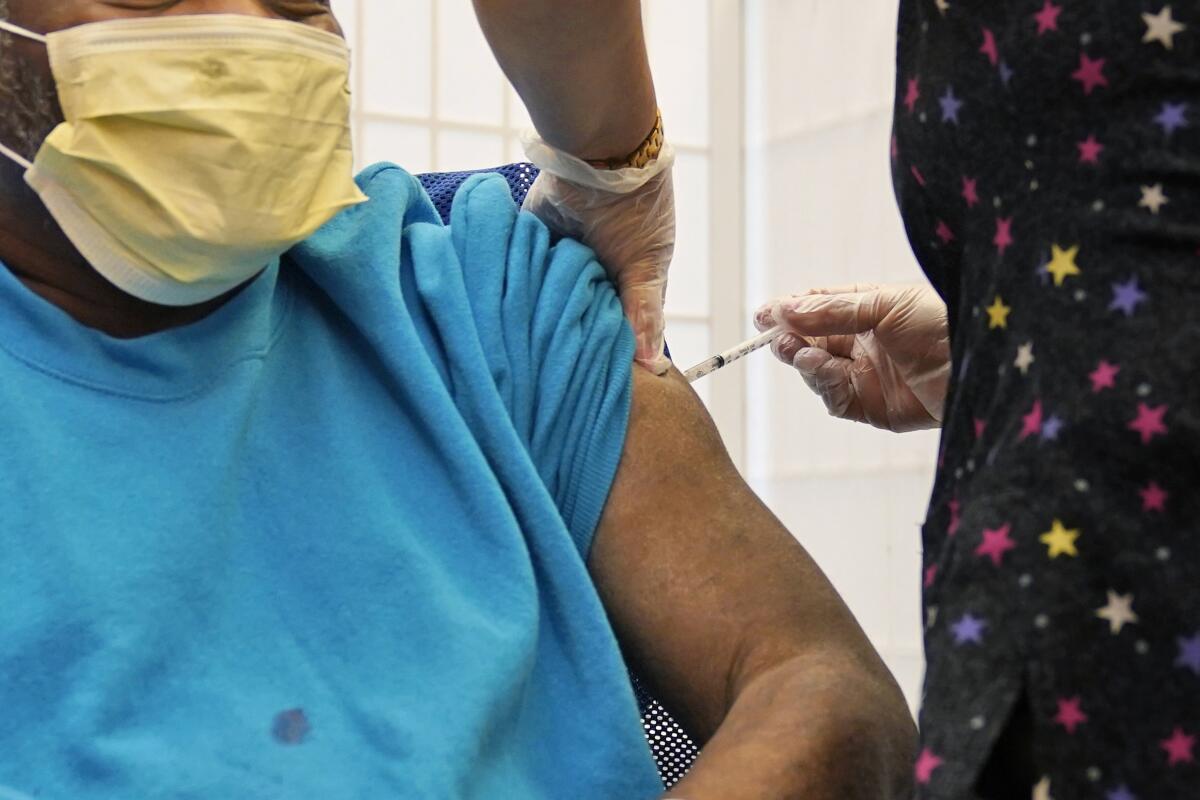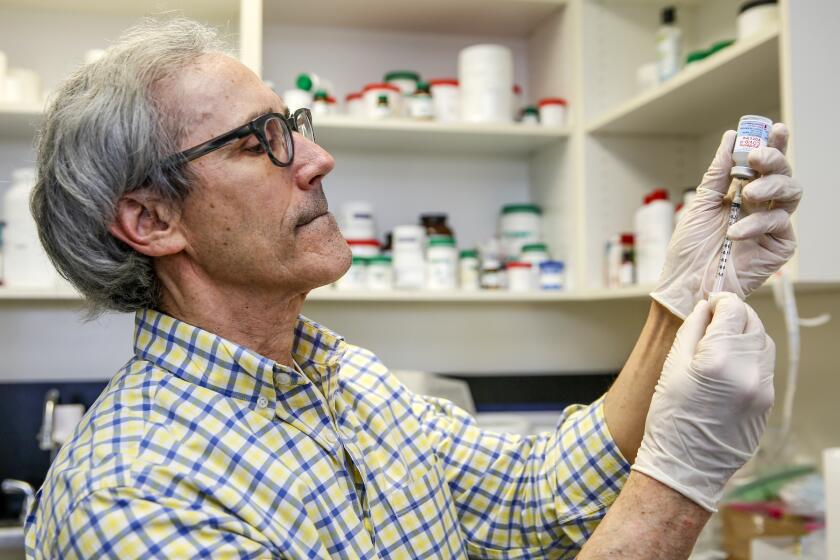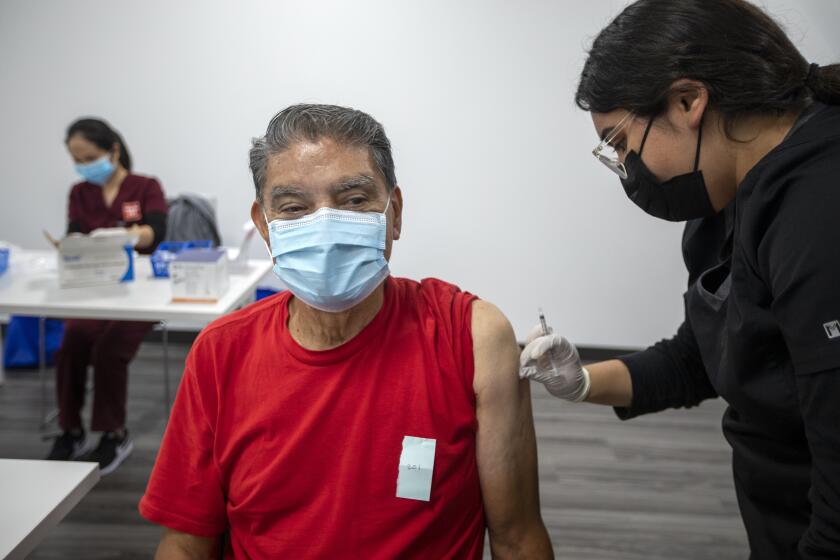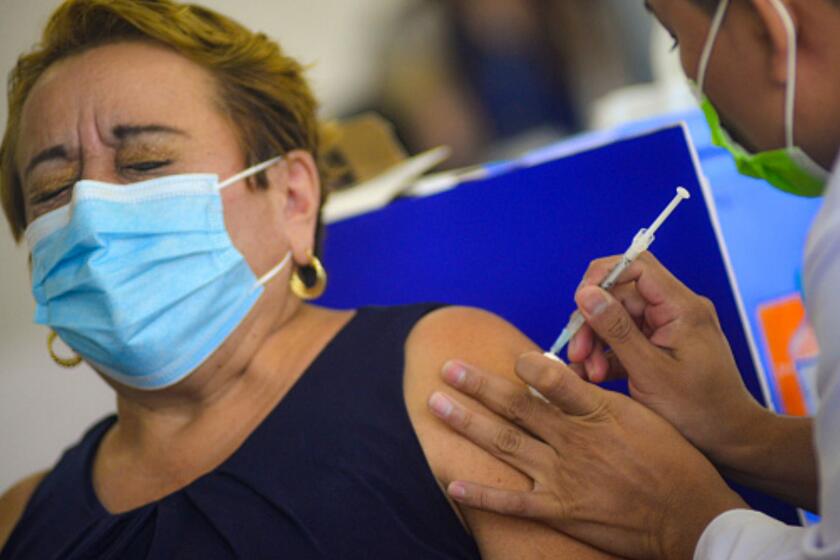Prior infection, vaccines provide best protection from COVID

- Share via
NEW YORK — A new study that compares prior infection and vaccination among people in California and New York concludes that getting the shots is still the safest way to prevent COVID-19.
The study examined infections in the summer and fall of 2021 and found people who were both vaccinated and had survived a bout of COVID-19 had the most protection against a new coronavirus infection.
But unvaccinated people with a past infection were a close second. By fall, when the more contagious Delta variant had taken over but boosters weren’t yet widespread, that group had a lower case rate than did vaccinated people with no past infection.
The Centers for Disease Control and Prevention, which released the study Wednesday, noted several caveats to the research. And some outside experts were cautious about the findings and wary of how they might be interpreted.
“The bottom-line message is that from symptomatic COVID infection you do generate some immunity,” said immunologist E. John Wherry of the University of Pennsylvania. “But it’s still much safer to get your immunity from vaccination than from infection.”
Vaccination has long been urged even after a case of COVID-19 because both kinds of protection eventually wane. Plus, there are too many unknowns to rely only on a past infection, especially one from long ago, said immunologist Ali Ellebedy at Washington University in St. Louis.
“There are so many variables you cannot control that you just cannot use it as a way to say, ‘Oh, I’m infected then I am protected,’” Ellebedy said.
In people who got a booster shot, levels of neutralizing antibodies exceeded the peak that followed two doses of COVID-19 vaccine.
The research does fall in line with a small cluster of studies that found unvaccinated people with a previous infection had lower risks of COVID-19 than vaccinated people who were never infected previously.
The new study’s findings do make sense, said Christine Petersen, a University of Iowa epidemiologist. She said a vaccine developed for an earlier coronavirus strain is likely to become less and less effective against newer versions.
However, experts said, there are a number of possible other factors at play, including whether the vaccine’s effectiveness simply faded over time in many people and to what extent mask wearing and other behaviors played a part in what happened.
When the coronavirus attacks the body, the immune system steps up, trying to respond quickly and powerfully enough to stop the virus from running wild.
Another thing to consider: The “staunchly unvaccinated” aren’t likely to get tested, and the study included only lab-confirmed cases, Wherry said.
“It may be that we’re not picking up as many reinfections in the unvaccinated group,” he said.
CDC officials noted other limitations. The study was done before the Omicron variant took over and before many Americans received booster doses, which have been shown to dramatically amplify protection by raising levels of virus-fighting antibodies.
The analysis also did not include information on the severity of past infections, or address the risk of severe illness or death from COVID-19.
In a large study, the risk of a breakthrough infection was 10 times lower for people who got a COVID-19 booster shot than for people who hadn’t.
The study authors concluded vaccination “remains the safest strategy” to prevent infections and “all eligible persons should be up to date with COVID-19 vaccination.”
The researchers looked at infections in California and New York, which together account for about 18% of the U.S. population. They also looked at COVID-19 hospitalizations in California.
Overall, about 70% of the adults in each state were vaccinated; an additional 5% were vaccinated and had a previous infection. A little under 20% weren’t vaccinated; and roughly 5% were unvaccinated but had a past infection.
The researchers examined COVID-19 cases from the end of May until mid-November, and calculated how often new infections occurred in each group. As time went on, the vaccine-only protection looked less and less impressive.
A study of 780,000 veterans shows a dramatic decline in effectiveness for all three COVID-19 vaccines in use in the U.S.
By early October, compared with unvaccinated people who didn’t have a prior infection, case rates were:
• 6-fold lower in California and 4.5-fold lower in New York in those who were vaccinated but not previously infected.
• 29-fold lower in California and 15-fold lower in New York in those who had been infected but never vaccinated.
• 32.5-fold lower in California and 20-fold lower in New York in those who had been infected and vaccinated.
But the difference in the rates between those last two groups was not statistically significant, the researchers found.
Hospitalization data, only from California, followed a similar pattern.
AP medical writer Lauran Neergaard contributed to this report.









